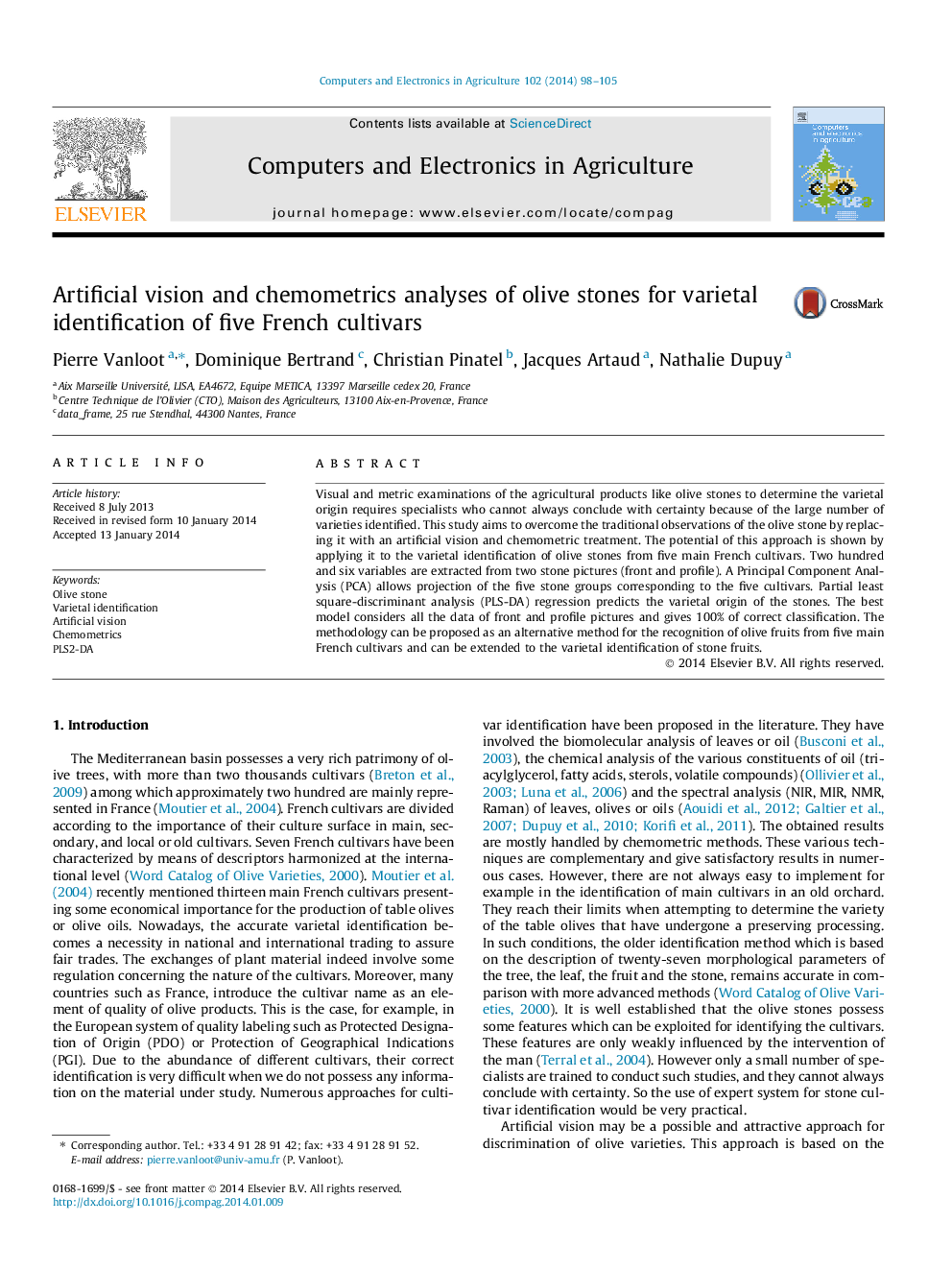| کد مقاله | کد نشریه | سال انتشار | مقاله انگلیسی | نسخه تمام متن |
|---|---|---|---|---|
| 84339 | 158875 | 2014 | 8 صفحه PDF | دانلود رایگان |
• The method is based on artificial vision coupled with chemometric treatment.
• The feasibility was tested for recognition of the varietal origin of olives.
• The prediction of the varietal origin gives 100% of correctly classified samples.
• This method can be proposed as an alternative to the visual characterizations.
Visual and metric examinations of the agricultural products like olive stones to determine the varietal origin requires specialists who cannot always conclude with certainty because of the large number of varieties identified. This study aims to overcome the traditional observations of the olive stone by replacing it with an artificial vision and chemometric treatment. The potential of this approach is shown by applying it to the varietal identification of olive stones from five main French cultivars. Two hundred and six variables are extracted from two stone pictures (front and profile). A Principal Component Analysis (PCA) allows projection of the five stone groups corresponding to the five cultivars. Partial least square-discriminant analysis (PLS-DA) regression predicts the varietal origin of the stones. The best model considers all the data of front and profile pictures and gives 100% of correct classification. The methodology can be proposed as an alternative method for the recognition of olive fruits from five main French cultivars and can be extended to the varietal identification of stone fruits.
Figure optionsDownload as PowerPoint slide
Journal: Computers and Electronics in Agriculture - Volume 102, March 2014, Pages 98–105
